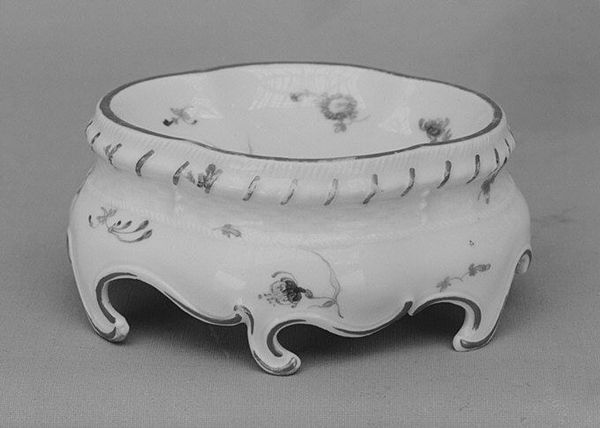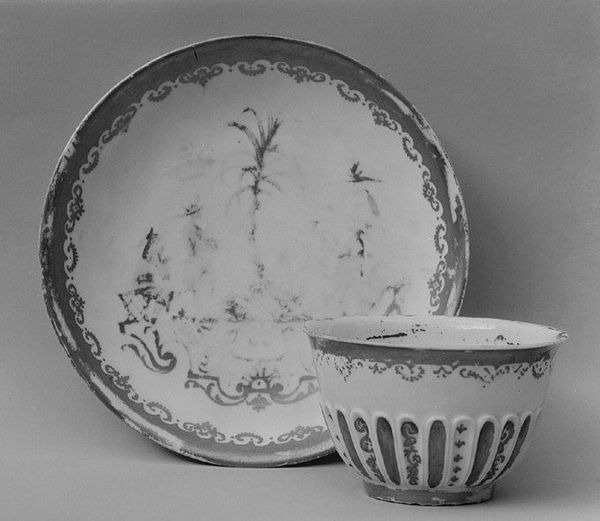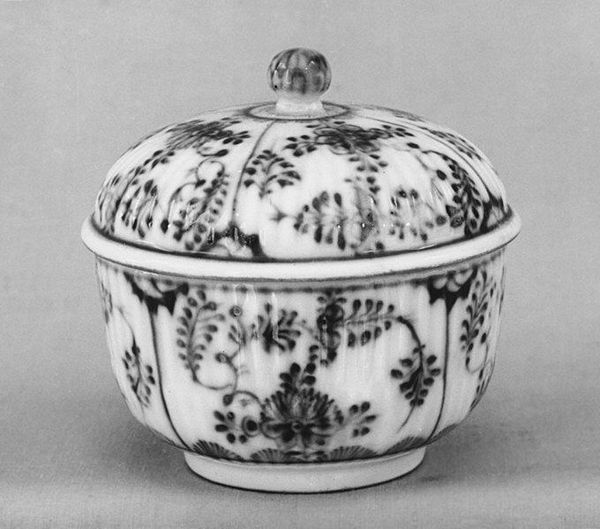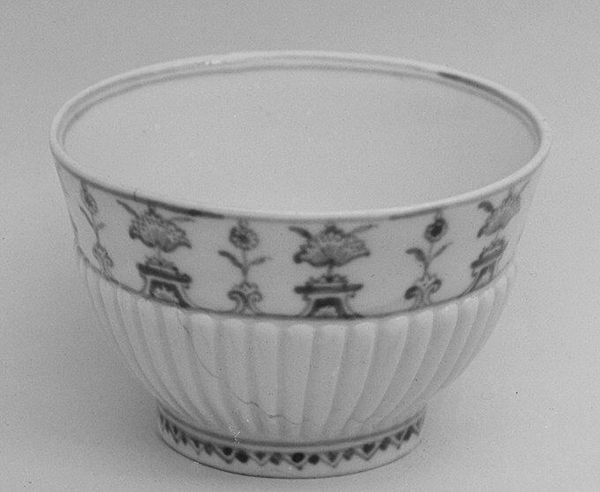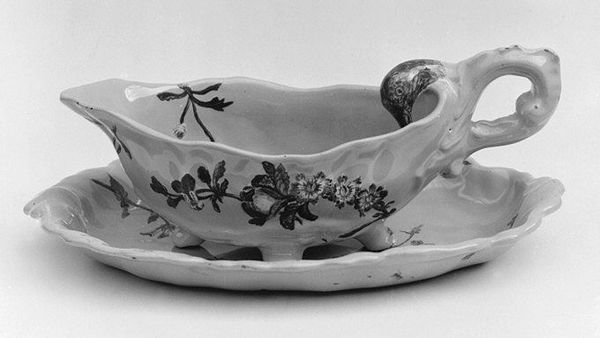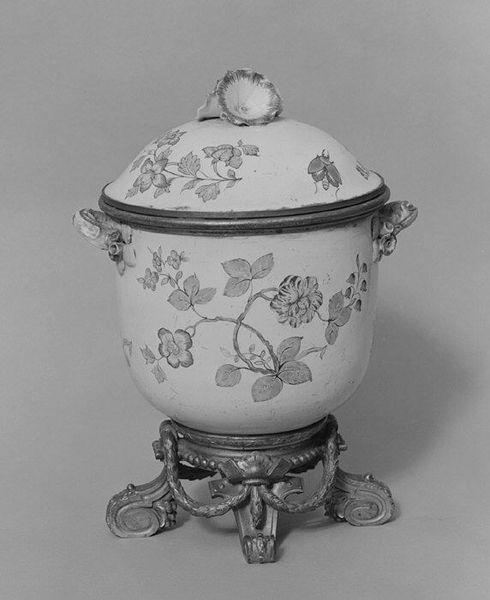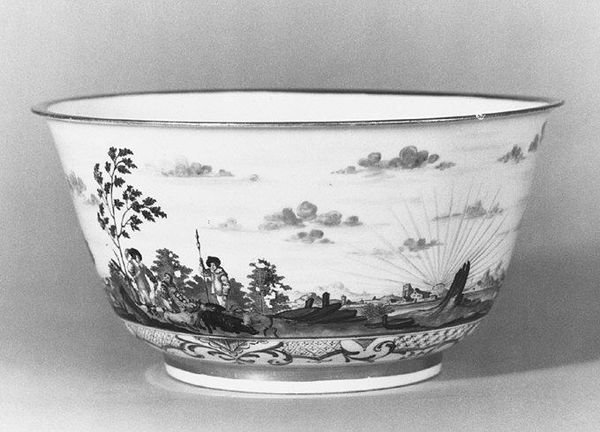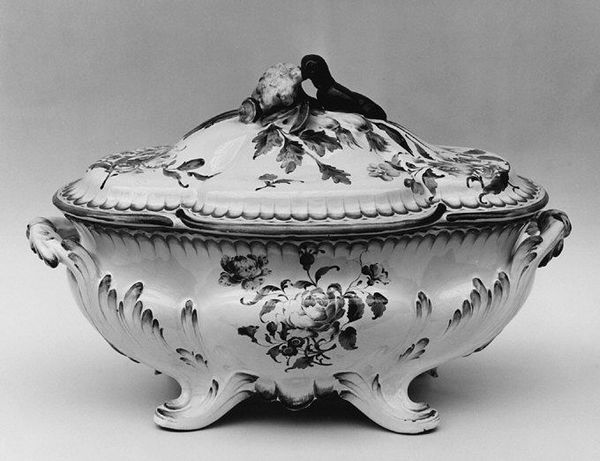
ceramic, porcelain, sculpture
#
asian-art
#
ceramic
#
porcelain
#
sculpture
#
decorative-art
#
rococo
Dimensions: 5 7/8 × 7 3/16 in. (14.9 × 18.3 cm)
Copyright: Public Domain
This covered bowl was made at the Meissen Manufactory, a porcelain workshop established in Germany in 1710. At this time, porcelain was known as ‘white gold’ and the secrets of its production were closely guarded by the Chinese. The bowl imitates Asian porcelain both in its material and its imagery. On its surface, leaping tigers are set amongst stylized trees and flowers in a manner that Europeans at the time associated with China and Japan. Such images offered European consumers an exciting taste of the exotic orient, while Meissen’s ability to produce convincing imitations of Asian porcelain also served a political and economic purpose, as they freed European markets from reliance on Asian imports. As historians, we can use sources like trade records, personal letters, and design manuals to investigate this bowl’s original context and uncover the complex story of cultural exchange, economic competition, and artistic innovation that it embodies.
Comments
No comments
Be the first to comment and join the conversation on the ultimate creative platform.
